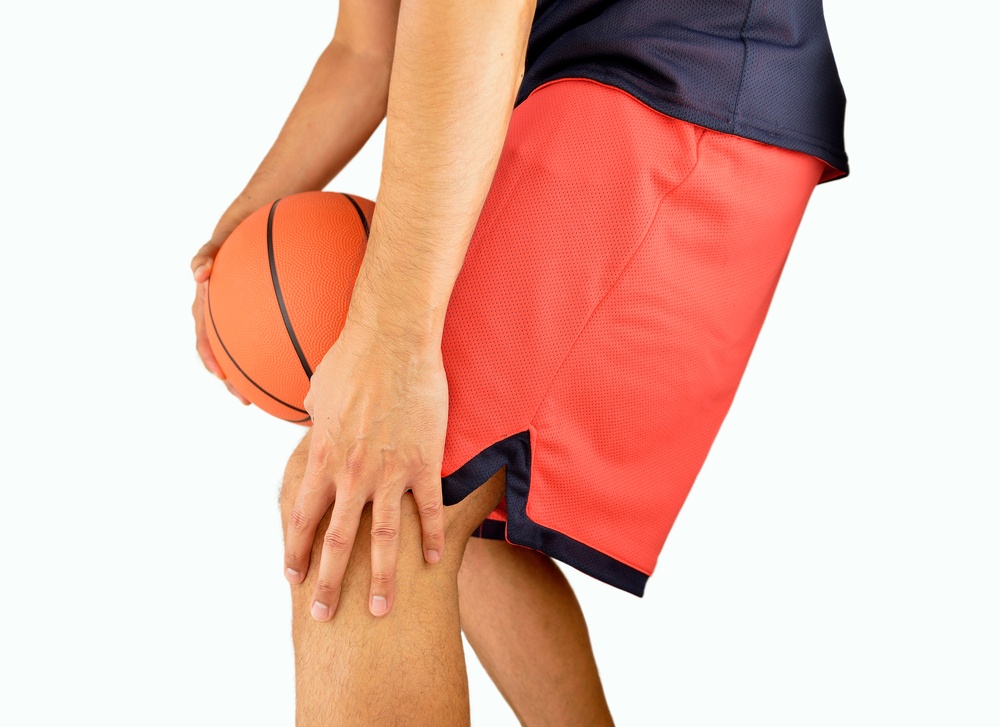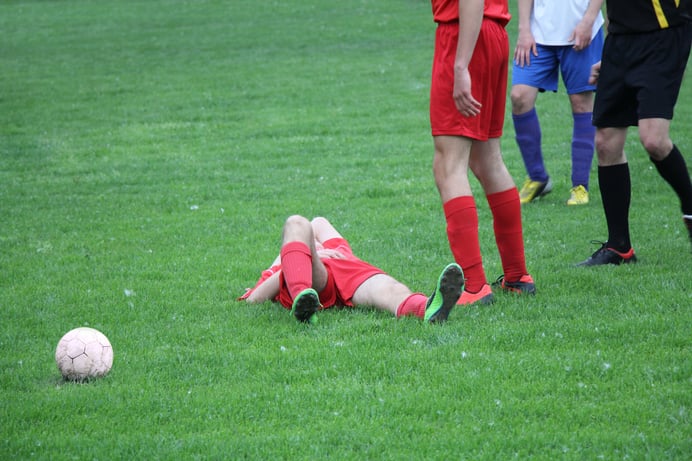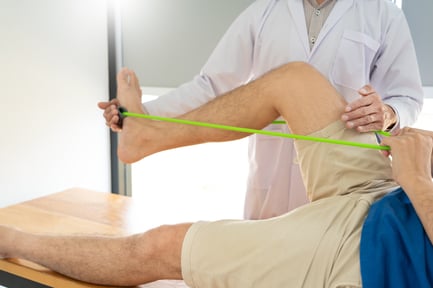ACL Injuries: What is an ACL? Mechanisms of injury? Treatments?
August 28th, 2019 | 4 min. read


The knee is a complex joint, the major motions are to flex (bend) and extend (straighten). This ability allows for everyday activities like standing, walking, running, jumping, and sitting to be possible. The joint is located where the femur (thigh bone) meets the tibia (shin bone) and patella (kneecap). The rounded condyles of the femur line up with the flat top of the tibia called the plateau.
Various structures sit between and around the bones to hold the knee joint stable, allowing the condyles and plateau to maintain their anatomic relation so that the knee can glide through its range of motion smoothly. The meniscus serves as padding between the femur and tibia, while the ligaments serve to keep the knee stable, not allowing unnatural motion. The ligaments are four tough fibrous bands of tissue that work together to provide stability.
- The medial collateral ligament (MCL) and the lateral collateral ligament (LCL) stabilize the sides of the knee, preventing it from buckling side to side.
- The anterior cruciate ligament (ACL) and the posterior cruciate ligament (PCL) form an X on the inside of the knee joint and prevent the tibia from sliding on the femur back to front and front to back respectively.
Any one or multiple ligaments can be injured. Ligament injury is called a sprain, when the fibers either stretch or tear. Depending on the severity of the sprain, these injuries can result in mild discomfort to complete incapacitation.
ACL Injuries: How Do They Happen? Risks?
ACL injuries are so common in fact that more than 200,000 cases occur per year. The majority of these sprains occur as a  result of sports or other fitness activities. With the prevalence of televised sports, you may have seen one of these injuries occur. Slow-motion replays focus on the terrifying way that the knee usually twists and “pops” when the ACL gives way.
result of sports or other fitness activities. With the prevalence of televised sports, you may have seen one of these injuries occur. Slow-motion replays focus on the terrifying way that the knee usually twists and “pops” when the ACL gives way.
ACL injuries can happen when the foot is planted firmly, the knee locks and twists or pivots at the same time. It is common when an athlete attempts to change direction rapidly. This sudden change puts tremendous strain on the ACL, which can lead to the injury and resulting slow-motion replay. At this point, no amount of applause as the injured player is carted off can take away from the fact that he or she likely won’t be seen playing again for the rest of the season! ACL injuries may also occur when the tibia is rotated and pushed forward in relation to the femur.
This is the mechanism of injury that occurs because of a fall when skiing. Risk factors to consider include:
- Age: ACL sprains are most common between the ages of 15 and 45, mostly due to the more active lifestyle and higher participation in sports.
- Fitness level: It is more likely to suffer an ACL sprain if there is a sudden increase in intense physical activity. It is common for the ligament to be injured if the muscles surrounding the knee are weak.
- Previously torn ACL: The risk of re-tearing a previously repaired ACL is approximately 15% higher than the risk of tearing a normal ACL. This risk is highest in the first year after the initial injury. The risk of an ACL tear in the opposite knee is also higher once the injury has occurred in the first.
- Participation in certain sports: ACL tears commonly occur in sports such as basketball, soccer, football, volleyball, downhill skiing, and tennis. These sports require frequent and sudden deceleration, such as cutting, pivoting, or landing on one leg
- Female sex: The rate of ACL injuries is three times higher in female athletes than in males. While the exact reason is unknown, some reasons include anatomic differences, muscle conditioning, control, and strength.
Symptoms and Classification of ACL Injuries
When an ACL injury occurs an audible “pop” can be heard. Most people are surprised by how loud it can be, and bystanders have heard this from the sideline of football and soccer games. A sudden shift in the joint accompanies this noise as well. Swelling of the knee joint occurs in almost all patients with an ACL sprain.
When the ACL is torn, vessels that feed the ligament can fill the joint space with blood in a condition known as hemarthrosis. This causes the swelling as well as redness, warmth, bruising, and a bubbling sensation in the joint. Pain is common with an ACL sprain and can vary depending on severity.
Much of the pain of an ACL injury is due to the swelling of the knee joint. This instability of the knee usually occurs with pivoting movements and can even occur during simple movements while walking or getting into a car. The degree of instability and pain depends on the severity of the sprain. Like every other sprain, an ACL injury is classified using a traditional grading method:
- Grade 1 (mild): This is an injury that causes only microscopic tears in the ligament. They do not significantly affect the knee’s ability to bear weight or result in instability.
- Grade 2 (moderate): The ACL is partially torn, and the knee may become unstable.
- Grade 3 (severe): The ACL is completely torn or separated from the bone attachment. At this point, the knee is usually unstable. It usually takes a tremendous force to cause such an injury, so a grade 3 sprain may be accompanied by other injuries.
ACL Injury Prevention

Strengthen: One of the most effective ways to reduce your risk of ACL sprains is by making the muscles that support your knee joints stronger. Exercises that work on the hamstring muscles and hips and thigh muscles should be prioritized.
Stretching: This is a simple and very effective way to mitigate your risk for an ACL sprain. It ensures that the muscles and ligaments of your knee stay flexible.
Practice Safe Maneuvers: Twisting, landing, and jumping can all result in an ACL injury when they are not done correctly. Generally, you want to keep your knees straight when you jump and let them bend a little while you land. Avoid turning your knees while jumping or landing as this can increase your risk. It is also helpful to work on your balance as it can help your knee joints handle sudden movements more effectively.
Don’t do too much too fast: It is important to know your limits and work within them. Increase the difficulty of workouts gradually to improve at a safe and steady pace.
If you suspect that you may have an ACL sprain, the first step to recovery is seeing a specialist. Feel free to contact Coastal Orthopedics to set up an appointment. Our talented and knowledgeable staff would be delighted to help you get back to a happy and active lifestyle. Check back into this blog in the coming weeks as we revisit ACL injuries to discuss the many options available to treat this common and dangerous injury.
Article written by: Rob Williams, MD
Dr. Williams has been practicing orthopedic surgery in Corpus Christi since 1998. After graduating from Texas Tech hereceived his medical degree from the University of Texas at San Antonio. At the prestigious Campbell Clinic located at the University of Tennessee, Dr. Williams completed not only an Orthopedic Surgery Residency, but an additional year of Fellowship Training in Spine Surgery. Dr. Williams is dedicated to creating an excellent patient experience in the office or in the surgery suite.
Topics:


